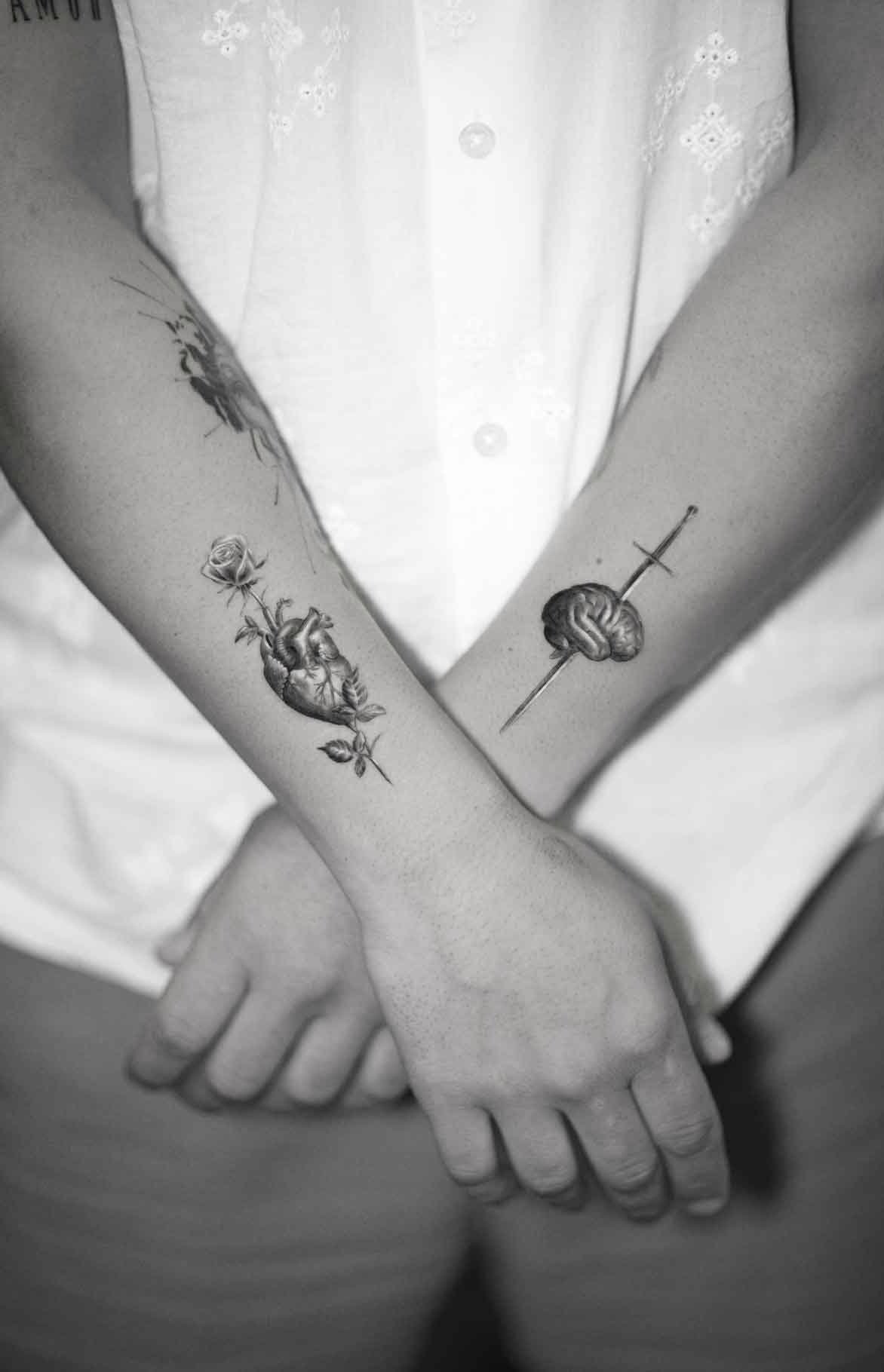[2025 Update] Everything You Need to Know Before Choosing a Wrist Tattoo
Made by Davide @aureoroma
Delicate and minimalist tattoos have become increasingly popular in recent years. These small, fine-line designs are often chosen for their understated elegance, making the wrist one of the most sought-after spots for body art. The wrist's compact surface area complements these intricate designs perfectly, but before you commit, it’s essential to understand the pros and cons of this location.
Here’s everything you need to know about pain levels, healing processes, aftercare tips, and design ideas to make an informed decision.
Made by Davide @aureoroma
Do Wrist Tattoos Hurt?
The pain level of a tattoo largely depends on its placement. Areas with thinner skin and closer proximity to bones tend to hurt more. The wrist is no exception, often considered on the higher end of the pain spectrum due to its structure and sensitivity.
Thin skin: The skin on the wrist, especially near the ulna (the bone on the side of your arm opposite the thumb), is very thin. This lack of cushioning means the tattoo needle can feel more intense.
Proximity to nerves: The inner wrist is near the palmar cutaneous branch of the median nerve, which connects to the central nervous system. This sensitivity can amplify the pain.
However, if you have a low pain tolerance, don’t worry—there are ways to reduce discomfort! Here are some tips to make the process smoother:
Eat a full meal: Low blood sugar levels can make you more sensitive to pain. Eating a substantial meal before your appointment can help.
Get enough rest: Fatigue increases pain perception. A good night’s sleep will help you stay alert and better respond to your body’s signals during the session.
Relax and breathe: Deep, steady breathing can make a big difference in managing pain.
Made by Alex Aureo @aureoroma
Is There a Risk of Blowout with Wrist Tattoos?
One potential concern with wrist tattoos is the risk of tattoo blowout. Blowout occurs when the ink spreads beyond its intended layers, causing blurred lines and a faded appearance.
Why is the wrist more prone to blowout?
Thin skin: The delicate skin of the wrist increases the likelihood of ink seeping into unintended layers.
Mobility: The constant movement of the wrist can disrupt the healing process, potentially leading to blowout.
To minimize this risk, follow these steps:
Choose an experienced artist: Inexperienced tattoo artists may push the needle too deeply, increasing the chances of blowout. A skilled professional knows how to adjust pressure and depth for areas like the wrist.
Practice good aftercare: Proper aftercare can significantly impact the healing process and the final appearance of your tattoo.
Realizzato da Alex Aureo @aureoroma
How to Take Care of a Wrist Tattoo?
Aftercare for wrist tattoos is crucial, especially given the area’s high mobility. Follow these steps to ensure a smooth healing process:
Clean regularly: Wash your tattoo gently with fragrance-free soap to remove bacteria and excess ink. Use lukewarm water to avoid irritating the skin.
Pat dry: Never rub the tattoo with a towel. Use a soft paper towel to gently pat it dry, avoiding any displacement of the ink.
Moisturize: Apply a thin layer of a fragrance-free tattoo moisturizer to keep the area hydrated and prevent cracking.
Avoid sun exposure: Protect your wrist tattoo with sunscreen once it’s healed. UV rays can cause the ink to fade prematurely.
Minimize movement: During the initial healing phase, try to limit excessive wrist movement to avoid stretching the skin.
By following these steps, you’ll reduce the risk of infection, blowout, and other complications.
What Tattoo Designs Work Well on the Wrist?
The wrist’s visibility makes it an excellent location for a meaningful and personal tattoo. Here are some popular design ideas:
Minimalist quotes or words: Short, impactful phrases or single words can carry deep meaning and fit perfectly on the wrist.
Zodiac symbols: Represent your astrological sign with a clean and simple glyph design.
Crescent moon: This classic design symbolizes growth, creativity, and change, making it a timeless choice.
Floral motifs: For something larger, consider flowers or vines that extend from the wrist to the forearm or hand. These designs can appear elegant and natural.
Geometric patterns: Symmetrical and structured designs can look striking on the wrist’s curved surface.
Pro Tip: If it’s your first tattoo, start with a smaller design. Minimalist tattoos are not only easier to handle pain-wise but can also serve as the foundation for future additions. You can always expand your design later.
Preparation Tips for Wrist Tattoos
Avoid wearing jewelry: On the day of your appointment, remove bracelets or watches. Imprints from jewelry can distort the stencil and result in uneven placement.
Research your artist: Look for an artist who specializes in fine-line or small tattoos to ensure your design is executed with precision.
Be patient: Healing takes time, especially on a highly mobile area like the wrist. Follow your artist’s instructions and be diligent with aftercare.
Final Thoughts
The wrist is a stunning canvas for tattoos, offering both visibility and versatility. However, it’s essential to weigh the pain, risks, and care requirements before committing. By choosing a reputable artist, preparing adequately, and following aftercare instructions, you can enjoy a beautiful wrist tattoo that you’ll cherish for years to come.
Whatever design or location you choose, take the time to research and plan carefully. Tattoos are lifelong art, so make sure every step—from placement to design to artist—is a deliberate decision!




